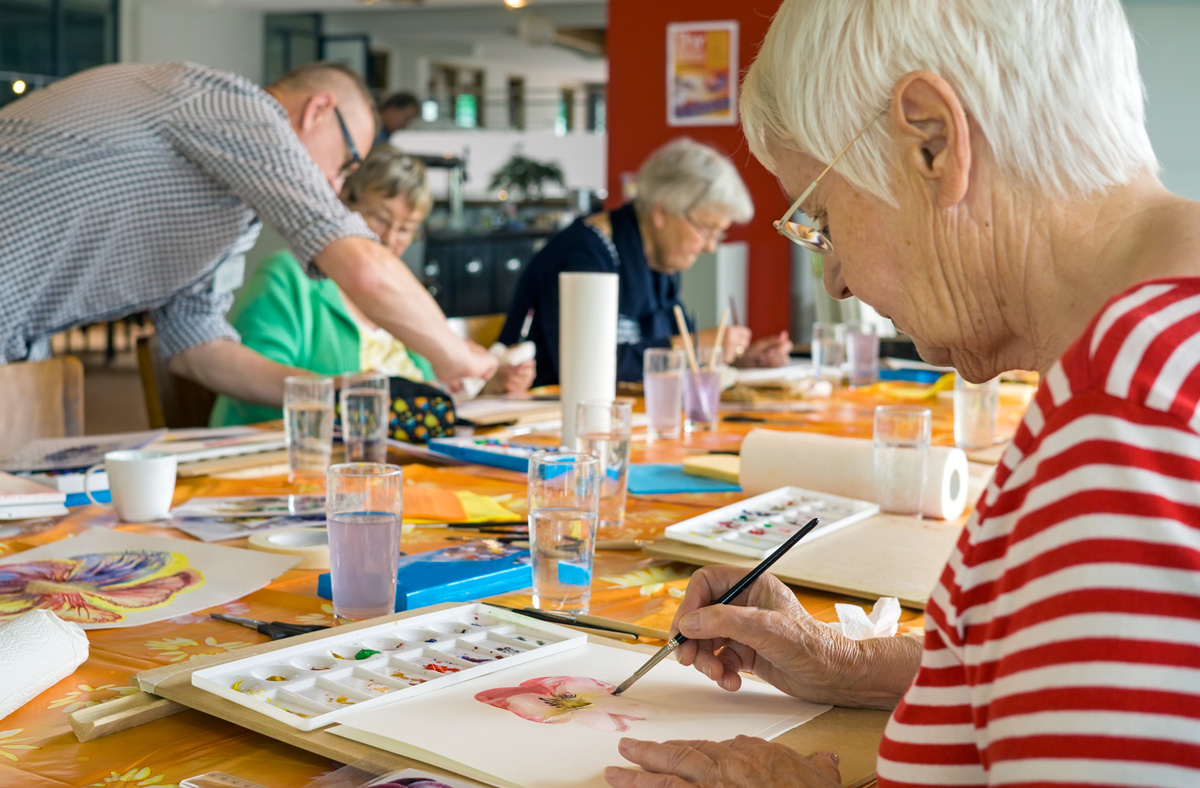
Moving to a retirement village can be a big change, but it’s also a great way to enjoy your retirement years. Here are a few tips on making the most of your new village life.
1. Declutter to embrace a simplified lifestyle
It’s likely you will be downsizing when you move into your new home within the village. This presents an opportunity to organise your personal belongings and embrace a simplified lifestyle.
When deciding what to bring, consider the following factors:
- Practicality: Will you actually use the item? If not, it’s probably not worth bringing.
- Sentimental value: Does the item have any sentimental value to you? If yes, it may be worth bringing, even if it’s not practical.
- Joy: Does the item bring you joy? If not, there’s no need to bring it.
It’s normal for decluttering to be an ongoing process. You can always get rid of things later if you find that you no longer need them. For more helpful tips on decluttering, read our article 10 tips for successful decluttering.
2. Expand your social life

Retirement villages usually offer a variety of social events and activities. The village’s social calendar can be a great way to meet new people and make friends. Some popular activities and events that retirement villages offer include:
- Games nights
- Potluck dinners
- Outings to local attractions
- Classes and workshops
- Volunteer opportunities
Many retirement villages also have organised groups that are specifically for residents. These groups can be a great way to meet people who share your interests. Some popular groups that retirement villages offer include:
- Bowling teams
- Walking groups
- Book clubs
- Dancing groups
- Choirs
- Gardening clubs
The level of involvement that you have in your retirement village’s social scene is up to you. You can choose to be as involved or as uninvolved as you like. However, if you’re looking for a way to socialise and make new friends, joining in on organised activities and events is a great idea.
3. Continue your hobbies
In addition to the facilities and activities mentioned above, retirement villages also offer a number of other opportunities for residents to continue their hobbies and interests. Villages often have groups for residents with shared interests such as:
- Arts and crafts: Many retirement villages have arts and crafts rooms where residents can paint, draw, sculpt, and make other crafts.
- Educational programs: Some retirement villages arrange for educational classes for their residents. These include guests invited to give a talk on a topic and other classes such as cooking classes, computer skills, dance lessons, and more.
- Libraries: Most retirement villages have a library where residents can borrow books, magazines, and other materials. These libraries can provide residents with a way to learn new things, stay entertained, and connect with other residents who share their interests.
- Work sheds: Some retirement villages have work sheds where residents can work on projects such as woodworking. Some villages have connections with the wider community groups where residents can use the workshop within the village to create items of need for groups outside of the village.
- Exercise: Many retirement villages offer group activities such as walking, gardening and dancing. It’s also common for villages to organise group exercise classes such as aqua aerobics, tai chi, yoga, and pilates.
4. Stay connected to friends and family

Most retirement villages have communal spaces where you can invite friends and family to join you for a coffee, game of cards, social activity, or possibly even an evening meal. If you have grandchildren, they may even be able to come and stay with you on weekends or holidays in the same way they did before moving.
If you live far away from friends and family, village staff may be able to help you set up video calls and use technology in other ways to stay connected.
5. Reclaim your free time
Since retirement villages offer low maintenance living, many residents find they are able to reclaim their free time for the activities and people they love. And if you struggle to stay on top of day-to-day tasks, most villages offer a range of support services to make life even easier, such as meal delivery, laundry, and housekeeping.
When it comes to something as significant as moving into a retirement village, it’s natural to feel overwhelmed or even a bit anxious. It’s a big change! But hopefully this list can help you focus on the many positives that living in a retirement village offers. For more great things about retirement village living, check out our article the 10 benefits of living in a retirement village.